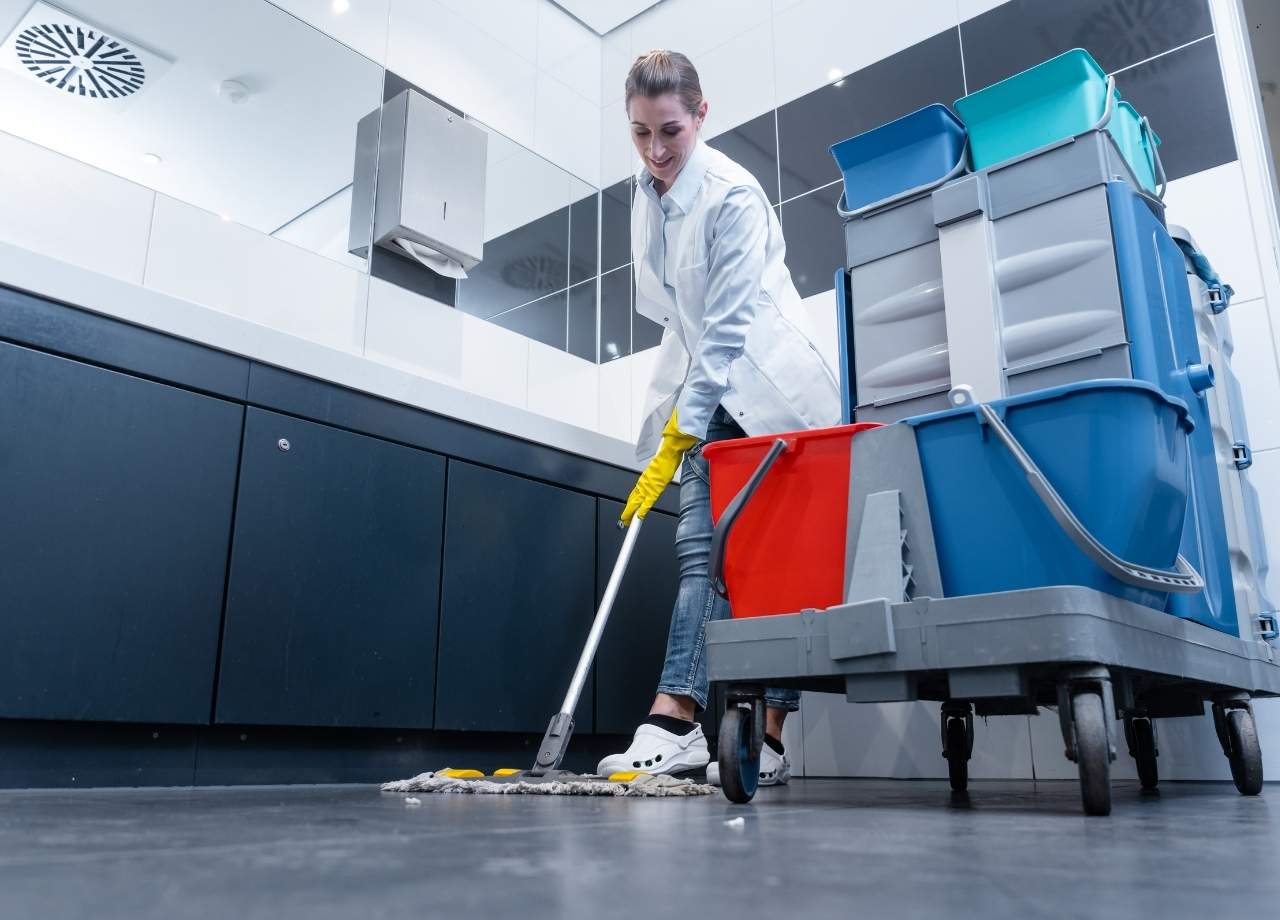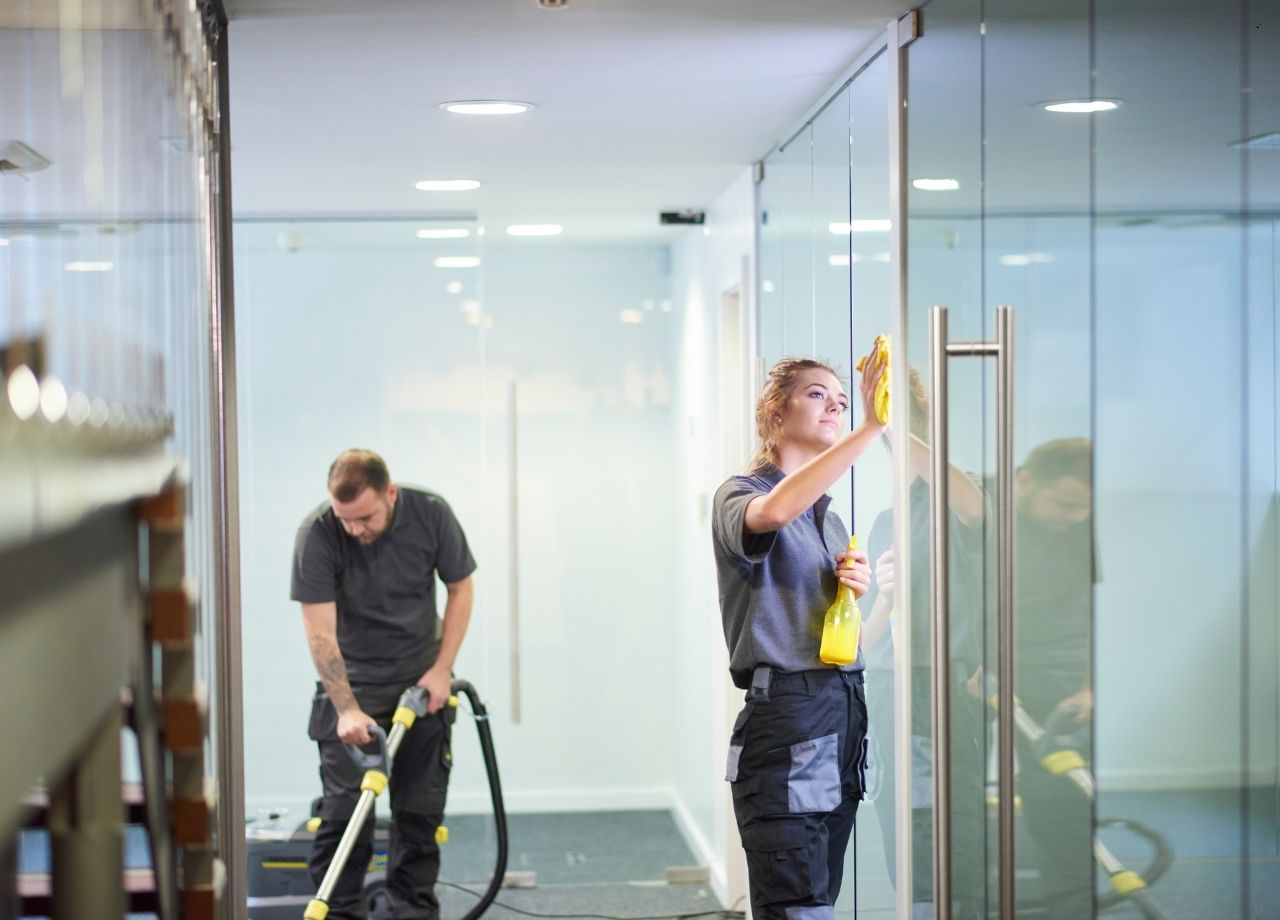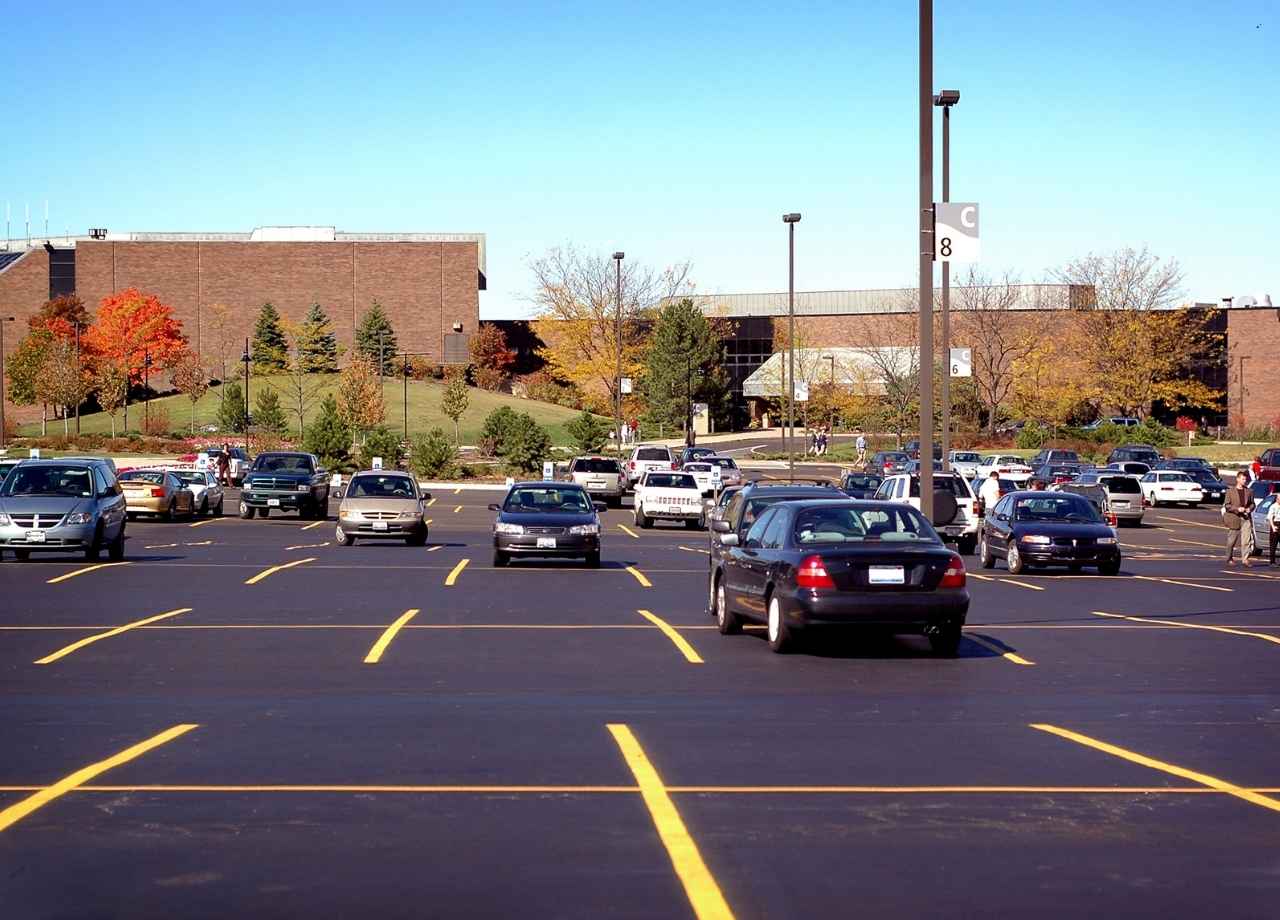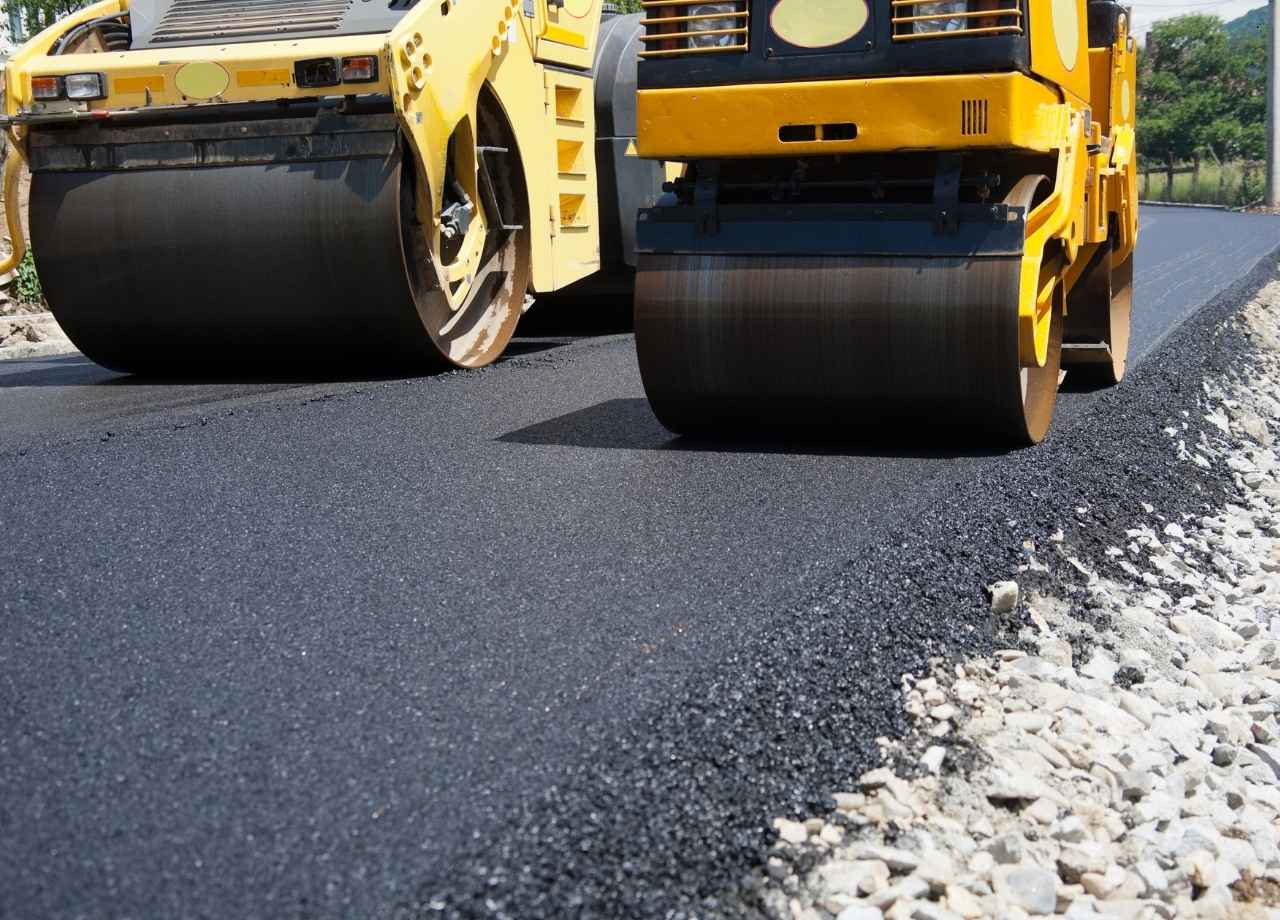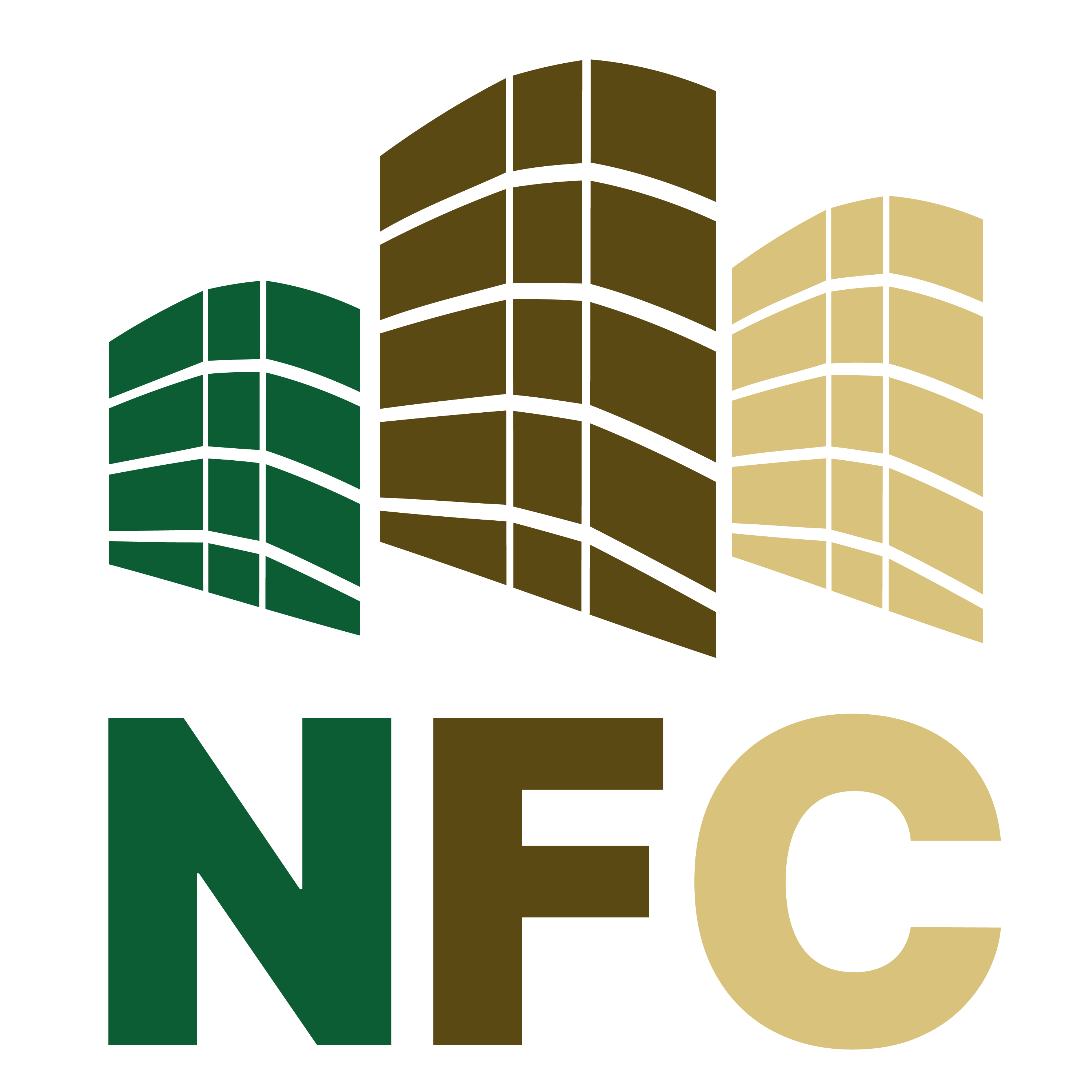Maintaining High-Traffic Commercial Restroom Hygiene
No one forgets a dirty restroom.
For businesses managing high-traffic commercial spaces—airports, malls, stadiums, hospitals—restroom hygiene plays a silent but powerful role in how visitors perceive the facility. It can either reinforce confidence or trigger frustration, complaints, and even lost revenue. Daily cleaning schedules alone aren’t cutting it anymore. Success hinges on precision, consistency, and smart planning backed by a realistic understanding of what heavy use actually looks like.
A restroom serving thousands daily doesn’t deteriorate gradually—it degrades in waves. Morning rushes, lunch breaks, event intermissions—they all create mini-crises. That paper towel on the floor at 10:15 a.m. becomes three by 10:45. By noon, it’s a full bin and soaked counters. The challenge isn’t just keeping restrooms clean. It’s keeping them from becoming unusable, even for short stretches. Here’s how some of the most effective facility managers handle it.
Hourly Checks Don’t Mean Much Without Accountability
A laminated sign with faded hourly checkmarks on the back of the stall door is meaningless unless someone is actually walking the space, inspecting—not just signing a sheet. Facility teams have found more success when responsibilities are assigned in overlapping shifts, where restroom upkeep is a part of an employee’s defined route, not an afterthought.
When someone’s shift begins and ends with restroom conditions, standards stay higher. Passive checklists don’t catch backed-up toilets or graffiti behind stall doors. But a trained staff member walking the space with eyes open will.
High-Touch Surfaces Spread Germs Fast
Door handles, flush buttons, faucet levers, and soap dispensers are high-traffic breeding grounds for bacteria. These surfaces can see thousands of fingers a day. Automated fixtures help, but not all buildings have them—and not all users trust them. Some people hit both the sensor and the manual button.
To keep hygiene standards high:
- Touchpoints should be wiped down at least every hour
- Use a disinfectant, not just a generic cleaning spray
- Prioritize door latches, sink handles, and stall locks
This isn’t overkill. Restrooms see more microbe transfer than food courts. Some facility managers are turning to real-time flagging systems, like QR codes on doors, which allow users to report spills or shortages instantly. One mall reported that their average overflow response time dropped from three hours to just six minutes after implementing the system.
Overlooked Zones Are the Fastest to Smell
Urinal bases, trash bin corners, the undersides of baby-changing tables—these aren’t always visibly dirty, but they hold moisture and bacteria that start to smell after just one missed cycle. Air fresheners don’t solve the issue—they mask it. And when lavender mixes with mildew, guests notice.
To address odor at the root:
- Focus on floor grout and drain traps
- Replace mop heads daily
- Use spray-and-vac systems instead of traditional mopping
- Check behind and beneath all mounted fixtures
The difference between a restroom that looks clean and one that smells clean often comes down to the zones most people overlook.
Toilet Paper Isn’t Just a Supply Issue—It’s a Signal
Running out of toilet paper sends a clear message: “No one is paying attention.” Even if everything else is spotless, users will assume the entire restroom is neglected. That perception matters.
Strategies that work:
- Install smart dispensers that monitor supply levels
- Use clear dispensers for easy visual checks
- Staff should carry backup rolls on every cycle
One facility saved over two labor hours per week simply by switching to transparent paper dispensers. That small change prevented constant in-and-out stall checks.
Trash Bin Size Has to Match Peak Flow
Overflow starts with one paper towel on top of a full bin. By the next wave, it’s a pile on the floor. While it might seem like a bigger bin solves the problem, oversized bins can become obstacles and harder to remove when full.
The smarter option:
- Mid-size bins emptied twice per shift
- Extra bags stored in compartments for quick turnover
- Place smaller bins in high-traffic corners to reduce bottlenecks
A clean restroom layout naturally improves hygiene by encouraging better traffic flow and minimizing waste on the ground.
Graffiti and Vandalism Invite More of the Same
Once damage appears—a broken lock, scratched mirror, marker on the wall—it becomes an accepted condition. That lowers the bar for other users. A neglected stall invites more neglect.
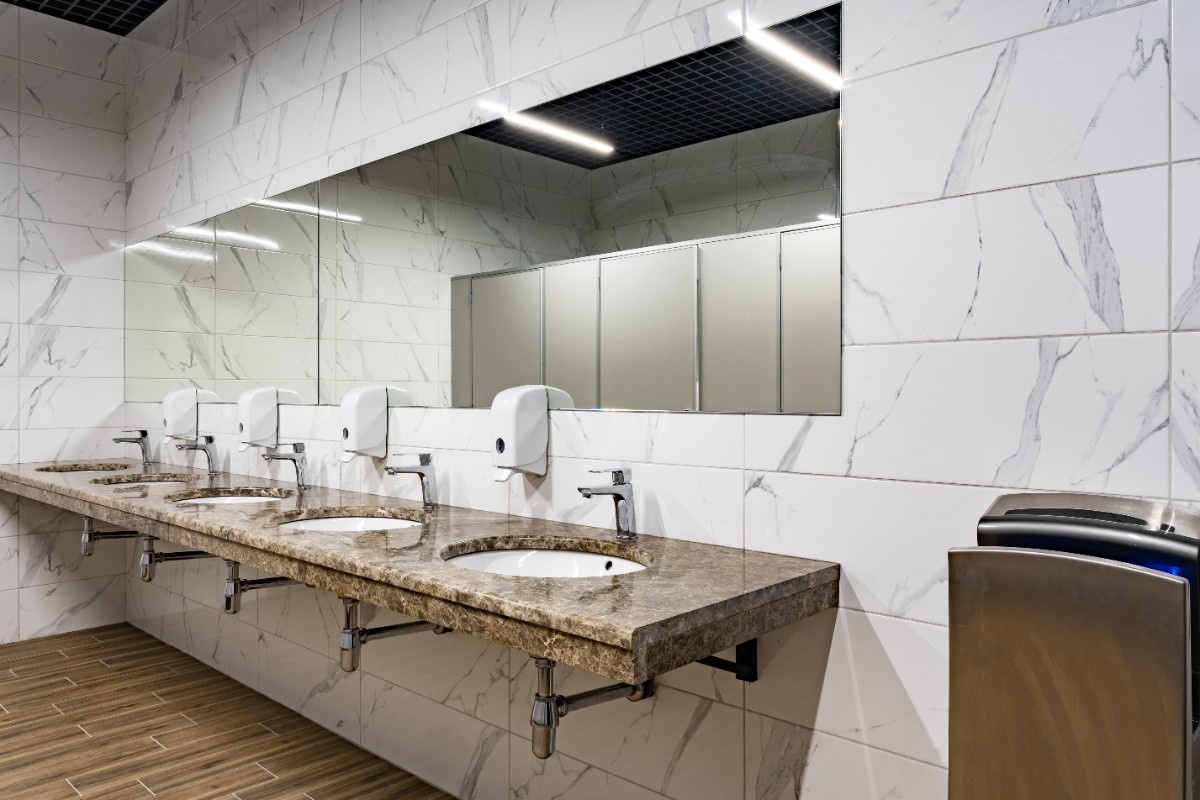
To stop this spiral:
- Supervisory staff should conduct walkthroughs regularly
- Quick fixes matter—replace a mirror, repaint a stall, fix a latch
- Log damage reports and address them in under 24 hours
People respect a space that clearly gets attention. The presence of maintenance staff alone can help reduce misuse.
Hand Dryers vs. Paper Towels: There’s No Universal Answer
It’s a decades-long debate. Hand dryers are more sustainable but often unpopular. Paper towels offer better absorption but create more waste.
Facility managers have found balance by:
- Offering both options when space allows
- Installing paper towels near sinks for easy access
- Placing dryers near exits to encourage use
- Putting bins directly under paper towel dispensers to reduce floor mess
Monitoring usage can inform future decisions. Some restrooms find paper wins every time, while others cut towel waste significantly by keeping dryers in place.
Day Porters Are Worth Their Weight in Cleanliness
One of the best investments a high-traffic facility can make is a dedicated day porter. This person handles everything between full cleanings: minor spills, refilling supplies, resetting counters, and spotting issues before they grow.
Benefits of day porters:
- Continuous presence deters misuse
- Porters can identify patterns, like recurring leaks or misuse
- Acts as an extra set of eyes during peak hours
- Cuts down on emergency call-ins and guest complaints
A major healthcare client saw a 60% drop in restroom complaints after implementing a porter program. They now consider porters part of their guest experience strategy—not just cleaning staff.
Renovation Pays Off More Than Repeated Scrubbing
Old fixtures hold grime. Cracked tile and worn grout never really look clean, no matter how well they’re scrubbed. Worse, aged restrooms create a perception of neglect—even if they’re technically sanitized.
Well-planned upgrades solve this.
- Wall-mounted toilets reduce mop contact points
- Sensor-driven faucets and flushers limit touch
- Non-slip flooring helps safety and cleaning efficiency
- Floor-to-ceiling partitions improve privacy and are easier to sanitize
Cleaning Products Matter More Than Most Think
It’s not just about how often you clean—it’s how smart you are with the products. The wrong chemical mix can destroy surfaces or cause health risks. The right combination increases efficiency and preserves materials.
Keys to better product use:
- Use color-coded bottles and dilution stations
- Train staff to understand purpose—not just process
- Use neutral pH cleaners on tile and non-abrasive disinfectants on metal
- Rotate products to prevent bacteria resistance
Facilities that invest in proper product education often see fewer staff injuries, better guest feedback, and longer-lasting fixtures.
Restroom Condition Defines Public Perception
Visitors judge your entire facility by your restroom. Even if the lobby shines, a grimy bathroom can derail a first impression—and that gets shared.
In our experience, the most successful facility managers combine attention to detail with smart systems and a motivated staff. At National Facility Contractors, we help commercial properties maintain high-traffic restroom programs that hold up under pressure—because a restroom shouldn’t be a liability.
Final Thoughts: Cleanliness That No One Notices—And That’s the Goal
Restroom hygiene isn’t glamorous, but it’s one of the most critical components of how your facility is perceived. When done right, it fades into the background. No guest complaints, no supply shortages, no backups.
Just a seamless, clean experience—even during peak flow.
If you’re ready to turn your restroom maintenance plan into a strategic advantage, reach out to National Facility Contractors for a customized hygiene strategy that meets real-world demands.

